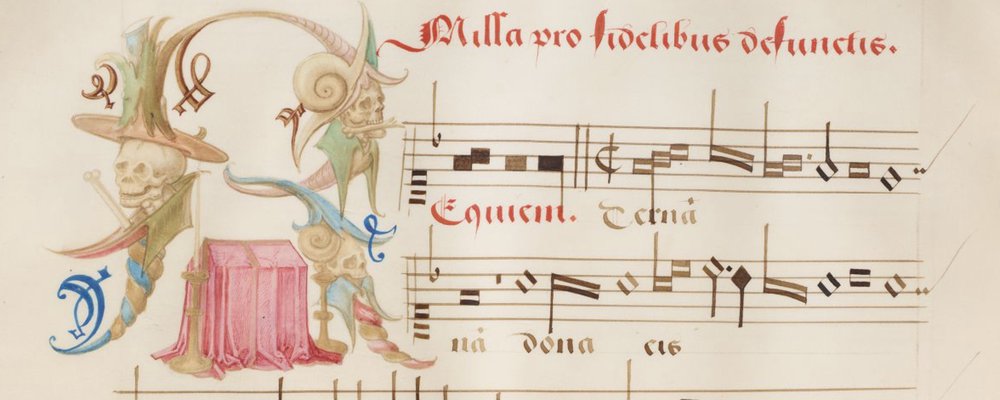Cantors and Catafalques: Music and Death c. 1300–c. 1530

B-Br-ms-IV 922 f. 133v © KBR, Alamire Digital Lab
In the Christian West, the musical underpinnings of rites for the dead consisted entirely of plainchant until the mid-fifteenth century. From then on, composers also began composing polyphonic masses for the dead. The emergence of the polyphonic Requiem was a point of rupture in music history. However, the polyphonic composition was still based on traditional plainchant, which remained in the form of an underlying, structural element. Therefore, anyone aiming to understand the early development of the polyphonic requiem also needs to investigate how plainchant was used as a starting point.
To date, fifteenth- and sixteenth-century monophonic music has hardly been studied. There was no stable, homogeneous repertoire during this period, and plainchant varied greatly from region to region in terms of both melody and general structure. The two related projects have a triple goal: a better understanding of plainchant in the Late Middle Ages and Renaissance, contextualization and analysis of the early polyphonic mass for the dead, and insight into the role of rites for the dead in various social and religious settings in the Low Countries and Germany.
In an initial phase, entitled The Chant Background to the Early Polyphonic Requiem (financed by the Special Research Fund (Bijzonder Onderzoeksfonds)), around six hundred Gregorian masses for the dead were collected and subsequently analyzed. These were ordinaria and propria, originating from both manuscripts and early prints. In a second phase, a wider corpus of manuscripts and prints (such as liturgical sources with and without notation) or archive material (such as wills or statutes) will be involved in the research. In 2019, this led to archival research in Colmar and Tournai.
